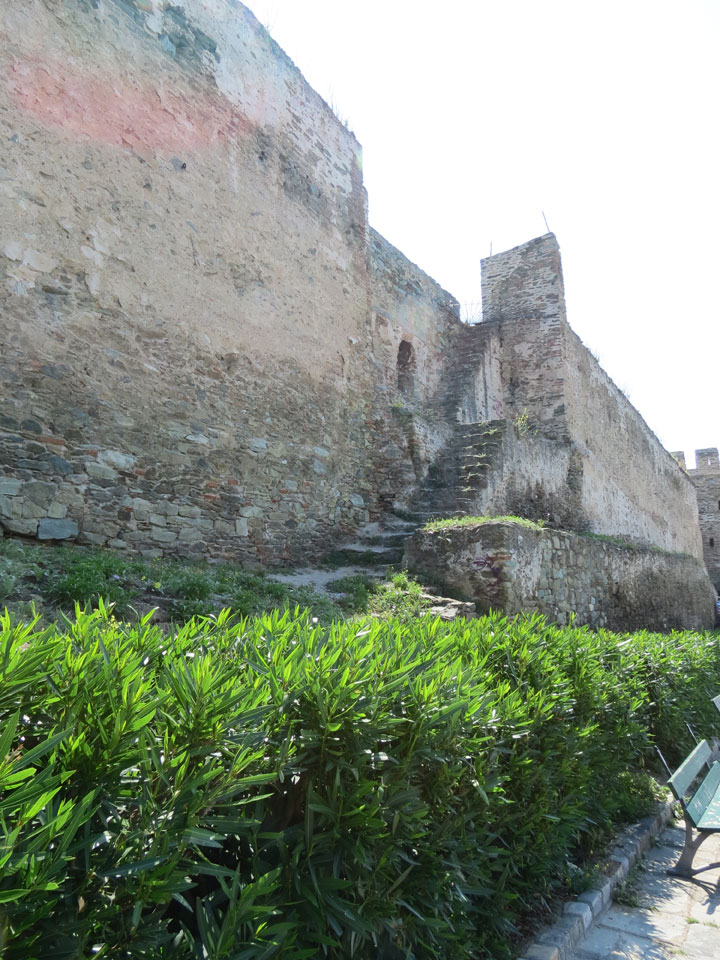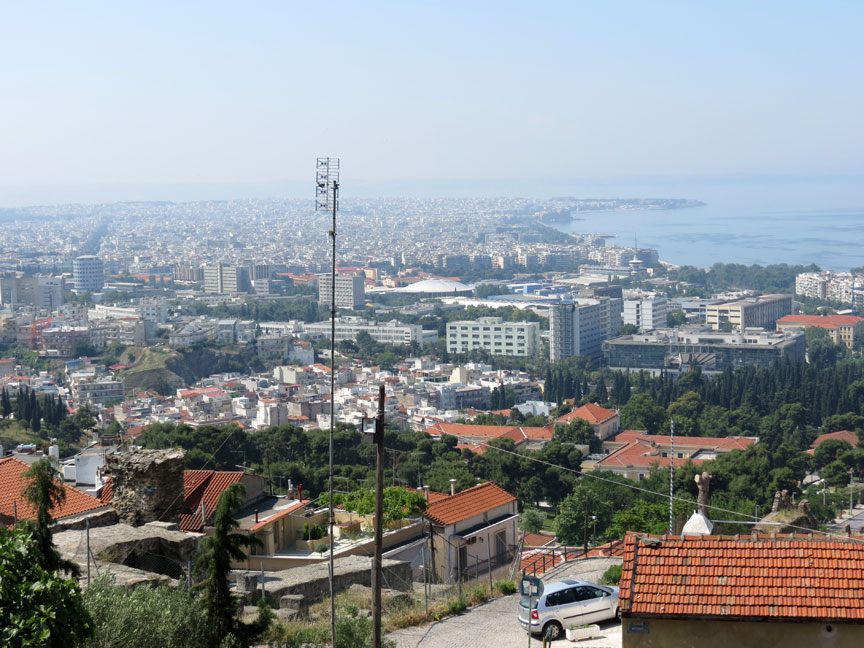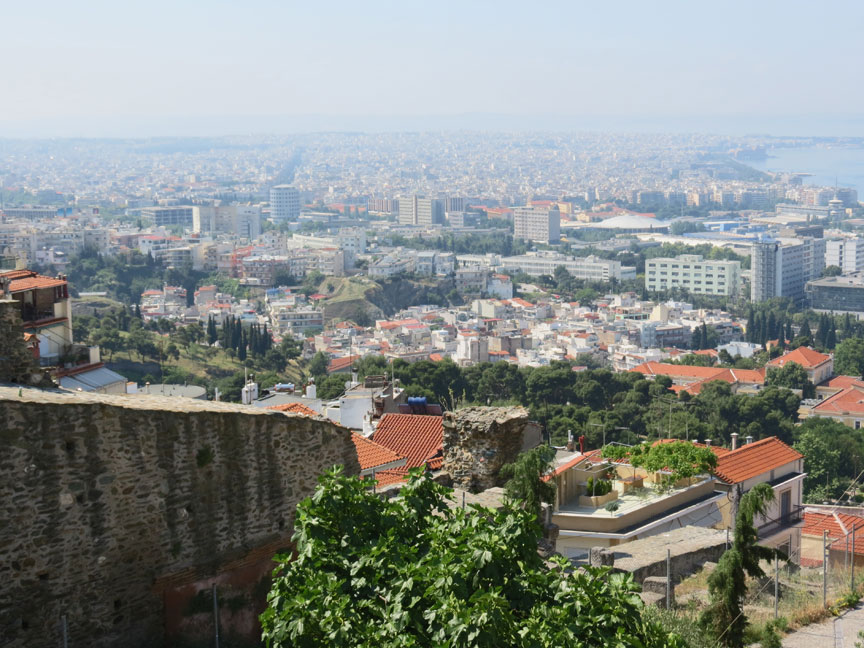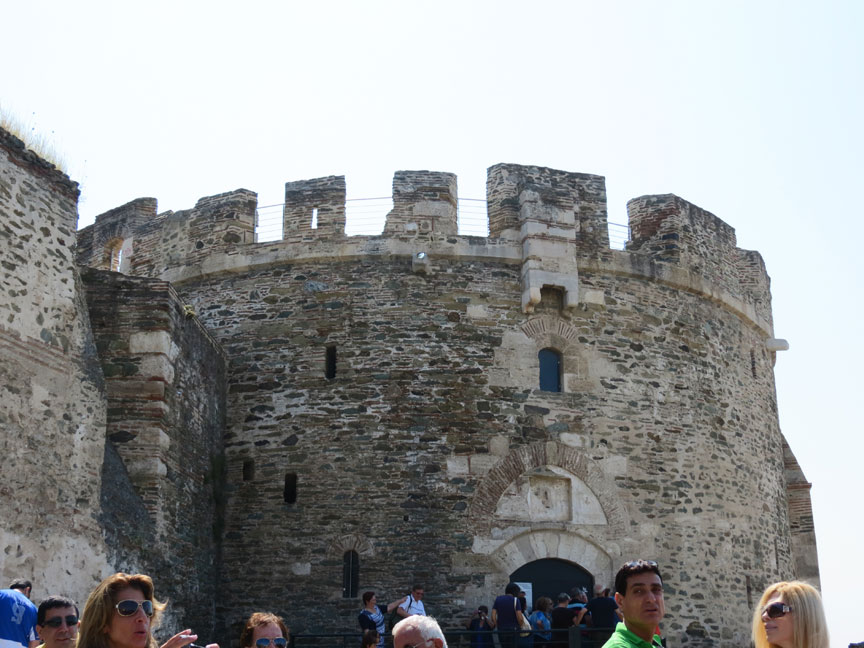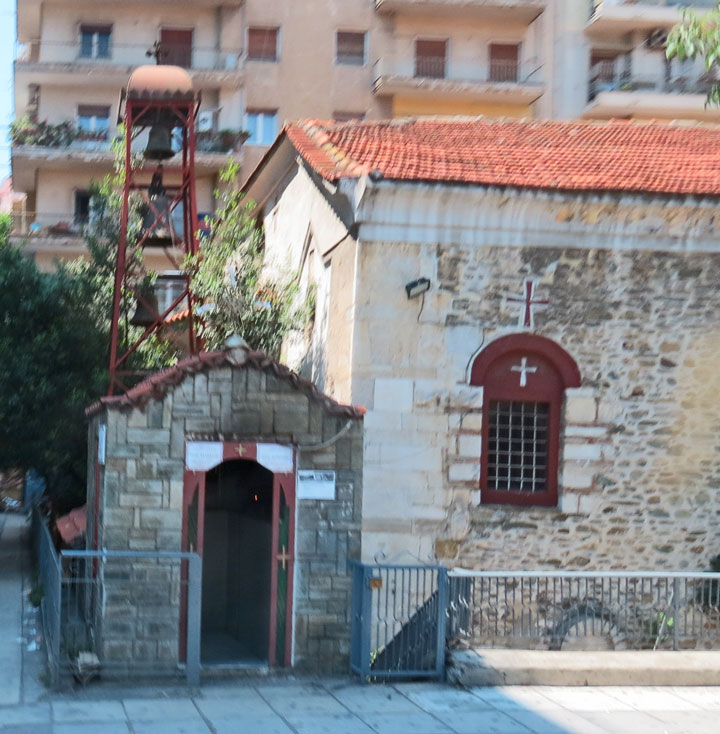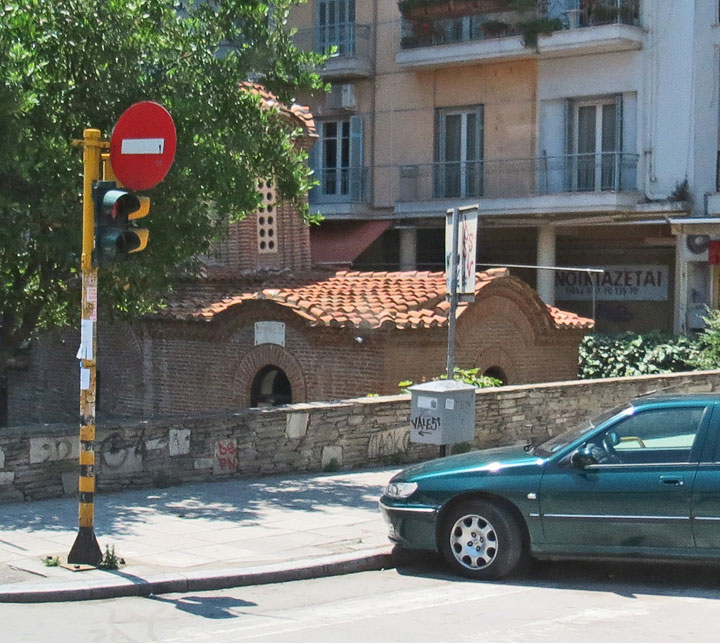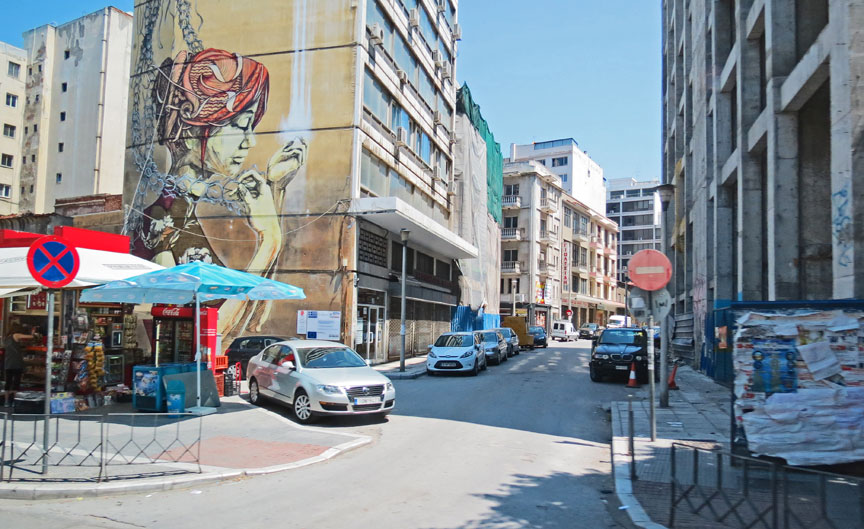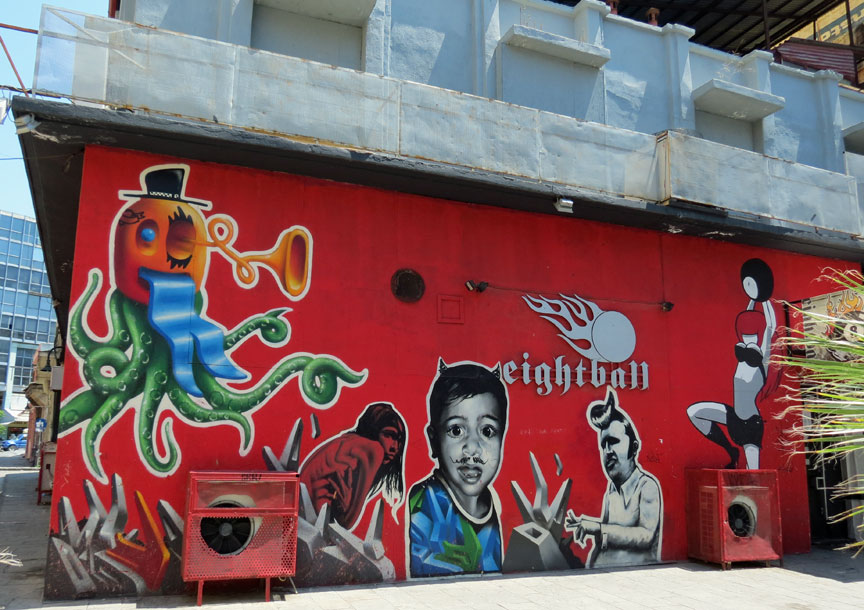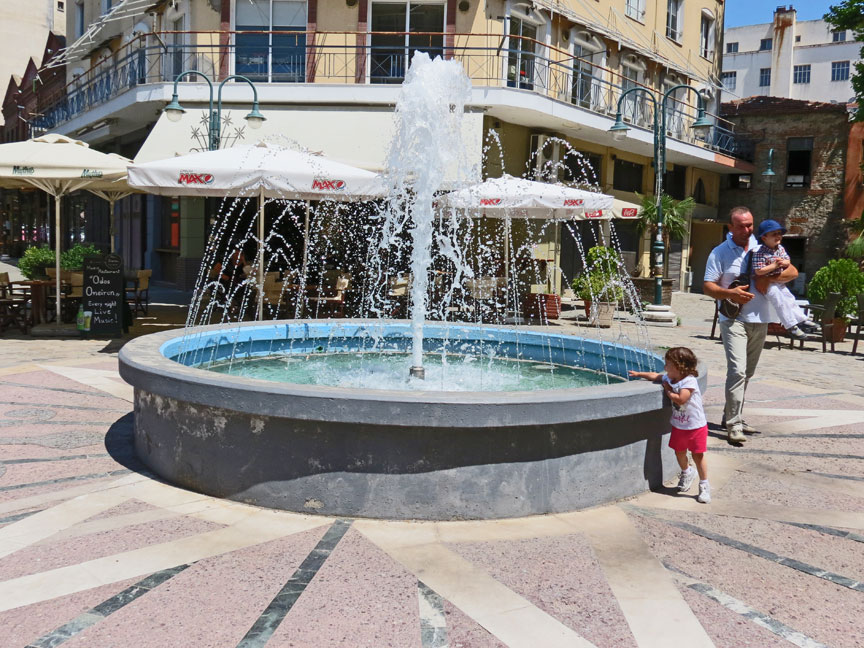

Thessaloniki


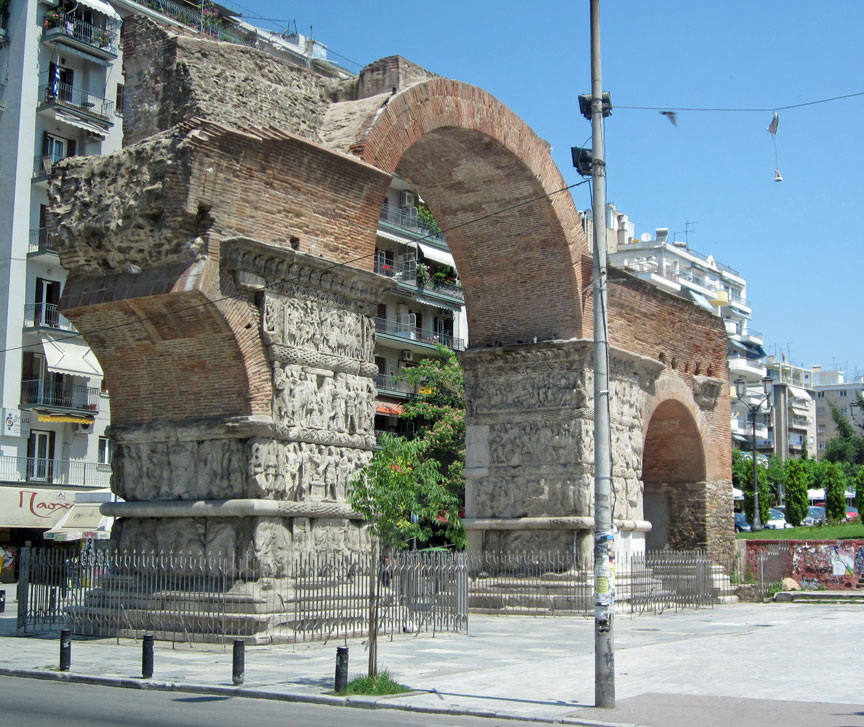
Triumphal Arch of Galerius
Thessaloniki, also known as Thessalonica and historically known as Salonica, is the second-largest city in Greece and the capital of the region of Central Macedonia as well as the capital of the Decentralized Administration of Macedonia and Thrace. Its honorific title is Συμπρωτεύουσα (Symprotévusa), literally "co-capital", and stands as a reference to its historical status as the Συμβασιλεύουσα (Symvasilévousa), "co-reigning" city of the Byzantine Empire, alongside Constantinople.
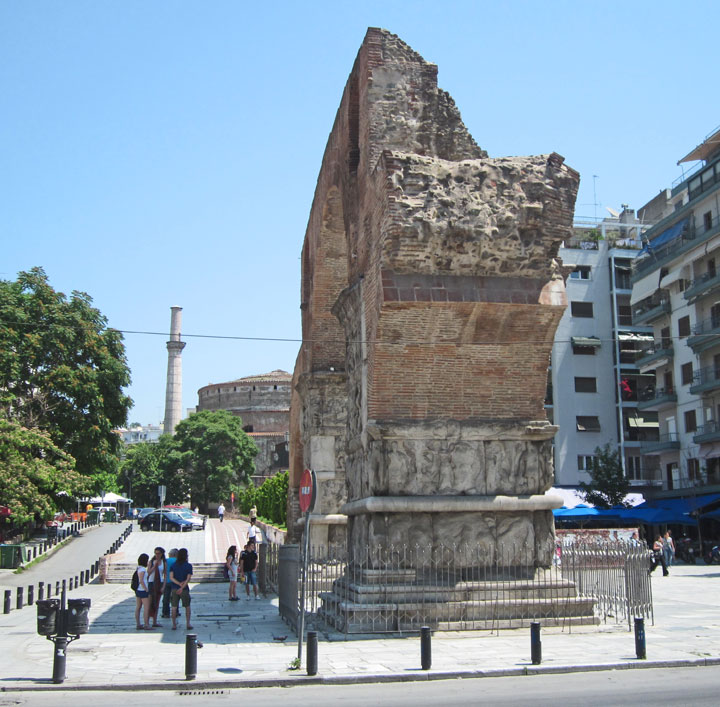
According to the 2011 census the municipality of Thessaloniki today has a
population of 322,240, while the Thessaloniki Urban Area (the contiguous built
up area forming the "City of Thessaloniki") has a population of 790,824; making
it the fifth largest and most populated city in the Balkans and the second most
populated city that is not a capital. Furthermore, the Thessaloniki Metropolitan
Area extends over an area of 1,455.62 km2 (562.02 sq mi) and its population in
2011 reached a total of 1,006,730 inhabitants.
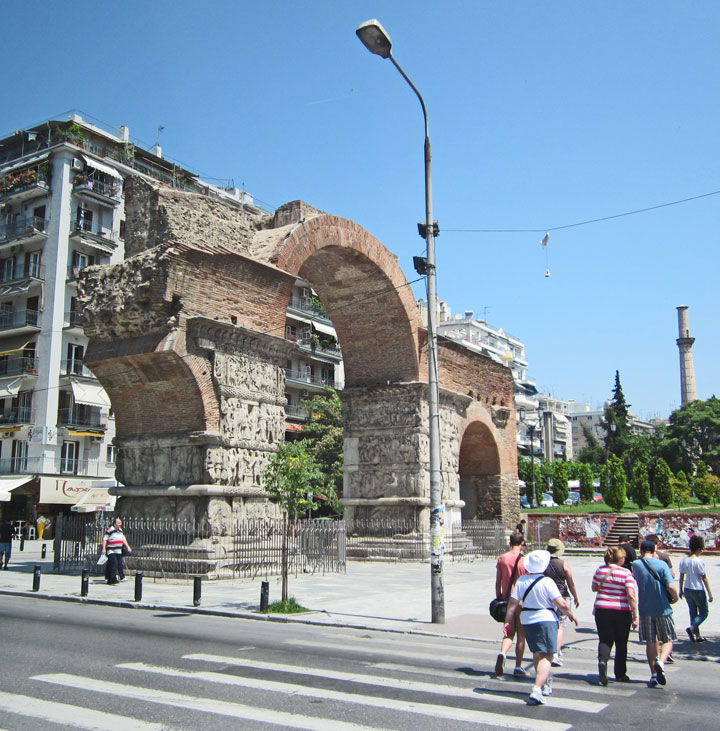
Thessaloniki is Greece's second major economic, industrial, commercial and
political centre, and a major transportation hub for the rest of southeastern
Europe; its commercial port is also of great importance for Greece and the
southeastern European hinterland. The city is renowned for its festivals, events
and vibrant cultural life in general, and is considered to be Greece's cultural
capital. Events such as the Thessaloniki International Trade Fair and the
Thessaloniki International Film Festival are held annually, while the city also
hosts the largest bi-annual meeting of the Greek diaspora. In 2014 Thessaloniki
will be the European Youth Capital.
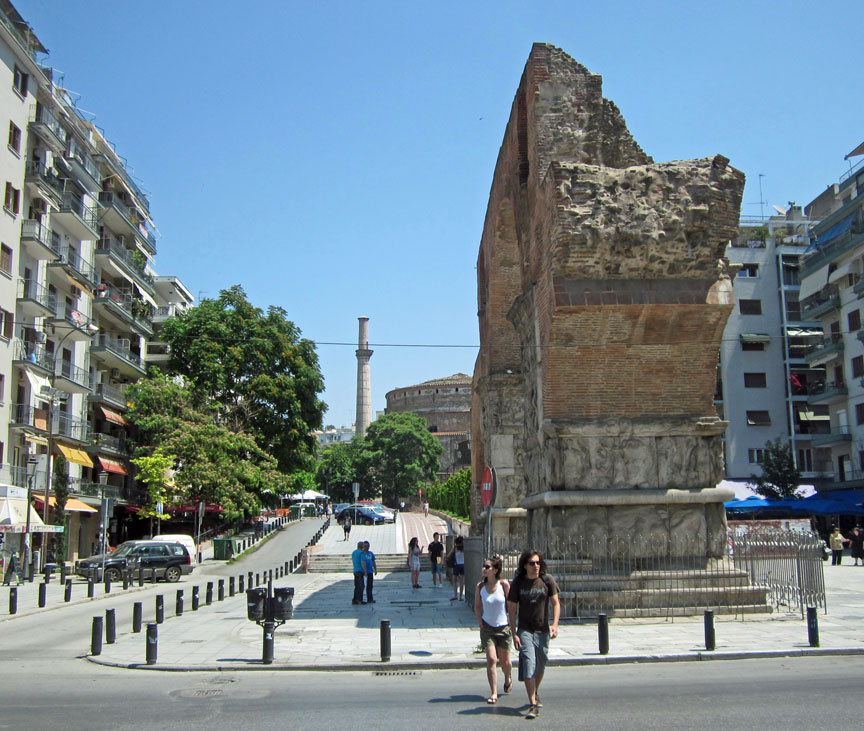
Founded in 315 BC by Cassander of Macedon, Thessaloniki's history spans some
2,300 years. An important metropolis by the Roman period, Thessaloniki was the
second largest and wealthiest city of the Byzantine Empire. Thessaloniki is home
to numerous notable Byzantine monuments, including the Paleochristian and
Byzantine monuments of Thessaloniki, a UNESCO World Heritage Site, as well as
several Roman, Ottoman and Sephardic Jewish structures. The city's main
university, Aristotle University, is the largest in Greece and the Balkans.
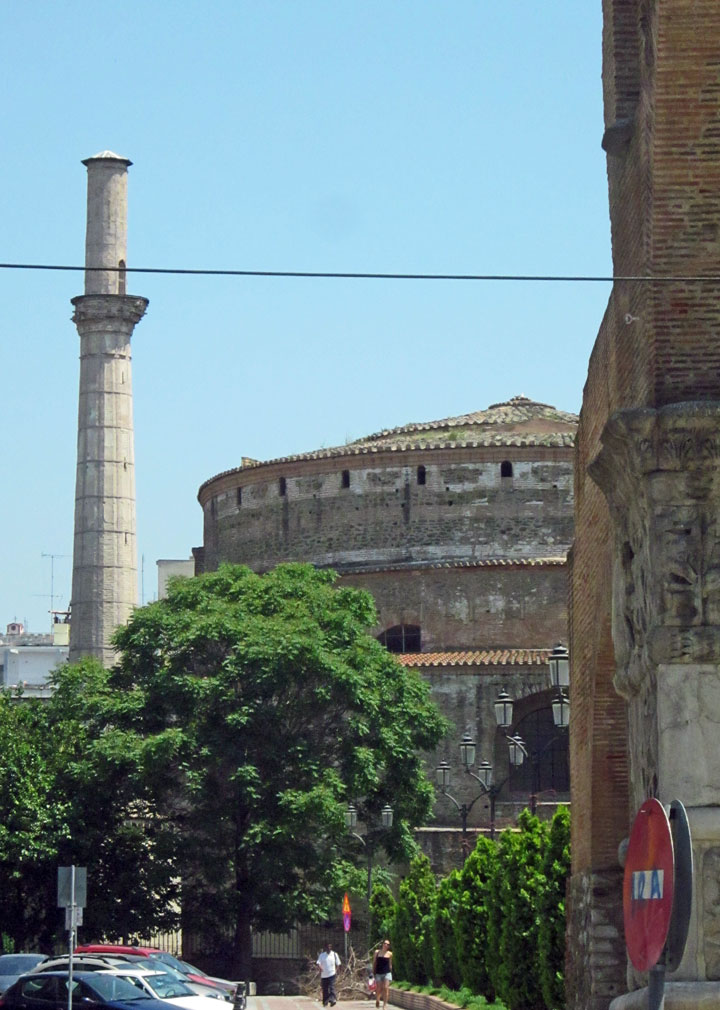
All variations of the city's name derive from the original (and current)
appellation in Greek: Θεσσαλονίκη (from Θεσσαλός, Thessalos, and Νίκη, Nike),
literally translating to "Thessalian Victory" and in origin the name of a
princess, Thessalonike of Macedon, who was named so because she was born on the
day of the Macedonian victory at the Battle of Crocus Field.
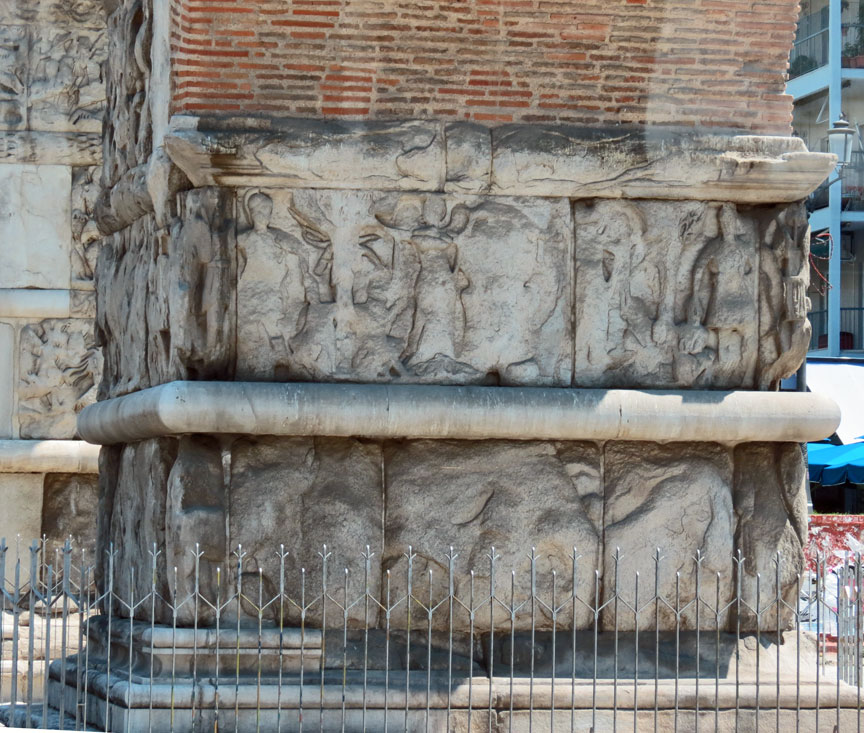
The alternative name Salonika or Salonica, derived from the variant form
Σαλονίκη (Saloníki) in popular Greek speech, gives rise to several languages'
form of the city's name and is formerly the common name used in some western
European languages. Names in other languages prominent in the city's history
include Солоунь (Soloun) in Old Church Slavonic, Salonika in Ladino, Selanik
(also Selânik) in Turkish (سلانیك in Ottoman Turkish), Solun (also written as
Солун) in the local and neighboring South Slavic languages, Салоники (Saloníki)
in Russian, and Sărună in Aromanian. In local speech, the city's name is
typically pronounced with a dark and deep L characteristic of Macedonian Greek
accent. The name is often written in the abbreviated form Θεσ/νίκη.
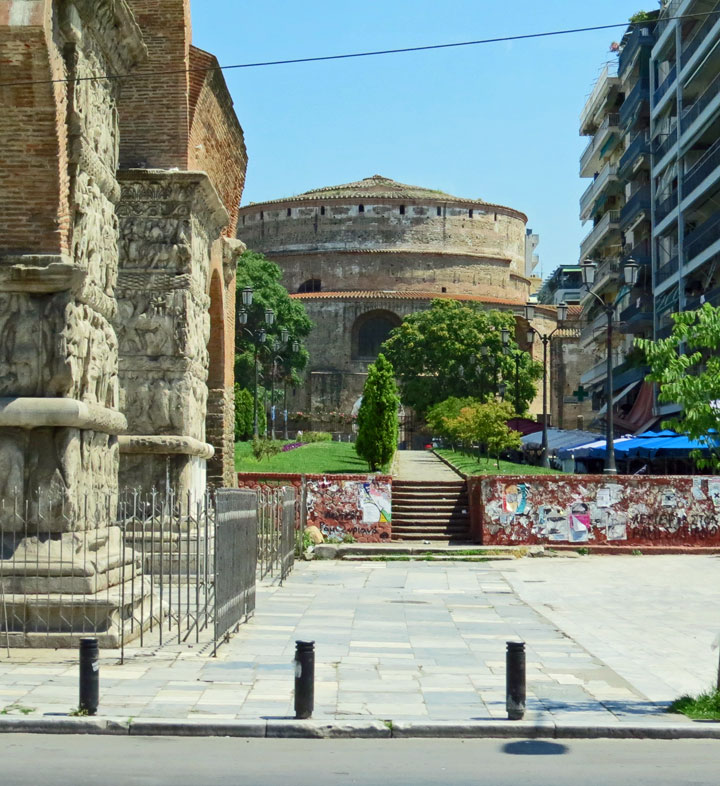
The history of the city of Thessaloniki is a long one, dating back to ancient
Macedonia. Since the opening of borders in Southeastern Europe following the
collapse of Communism in the Balkans in the early 1990s, it has experienced a
strong revival.
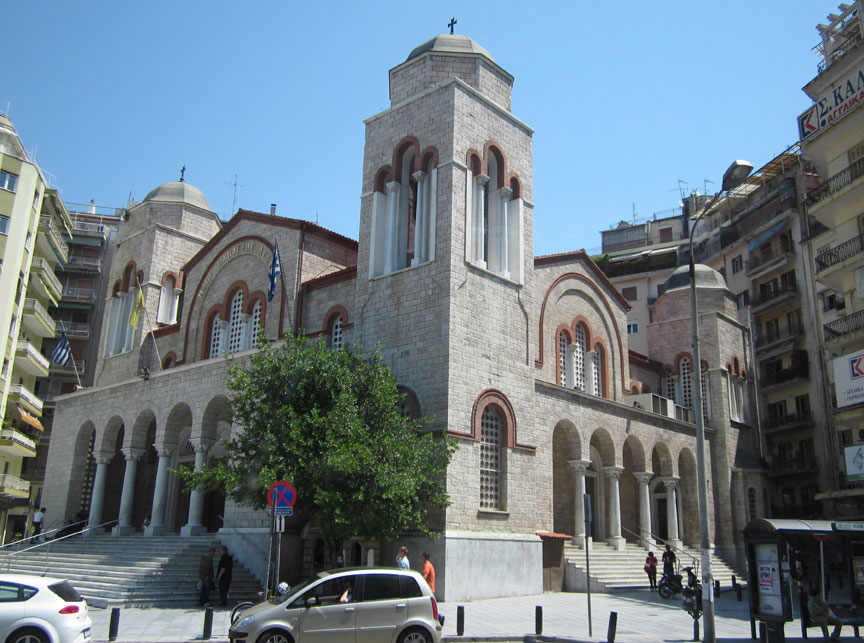
The 4th century AD Rotunda of Galerius, one of several Roman monuments in the
city and a UNESCO World Heritage Site.

The city was founded around 315 BC by the King Cassander of Macedon, on or near
the site of the ancient town of Therma and 26 other local villages. He named
it after his wife Thessalonike, a half-sister of Alexander the Great and
princess of Macedon as daughter of Philip II. Under the kingdom of Macedon the
city retained its own autonomy and parliament and evolved to
become the most important city in Macedon.
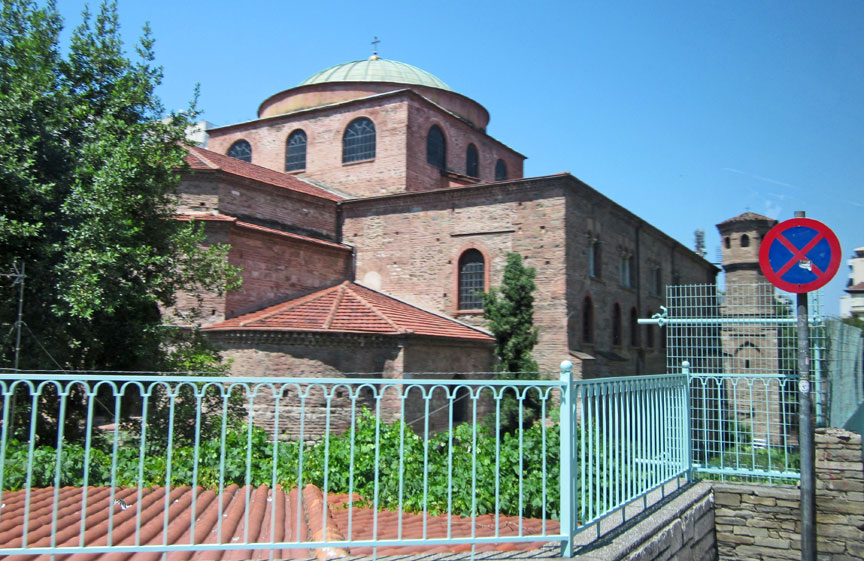
After the fall of the kingdom of Macedon in 168 BC, Thessalonica became a free
city of the Roman Republic. It grew to be an important trade-hub located on
the Via Egnatia, the road connecting Dyrrhachium with Byzantium, which
facilitated trade between Thessaloniki and great centers of commerce such as
Rome and Byzantium. Thessaloniki also lay at the southern end of the main
north-south route through the Balkans along the valleys of the Morava and Axios
river valleys, thereby linking the Balkans with the rest of Greece. The city
later became the capital of one of the four Roman districts of Macedonia. Later
it became the capital of all the Greek provinces of the Roman Empire due to the
city's importance in the Balkan peninsula. When the Roman Empire was divided
into the tetrarchy, Thessaloniki became the administrative capital of one of the
four portions of the Empire under Galerius Maximianus Caesar, where Galerius
commissioned an imperial palace, a new hippodrome, a triumphal arch and a
mausoleum among others.
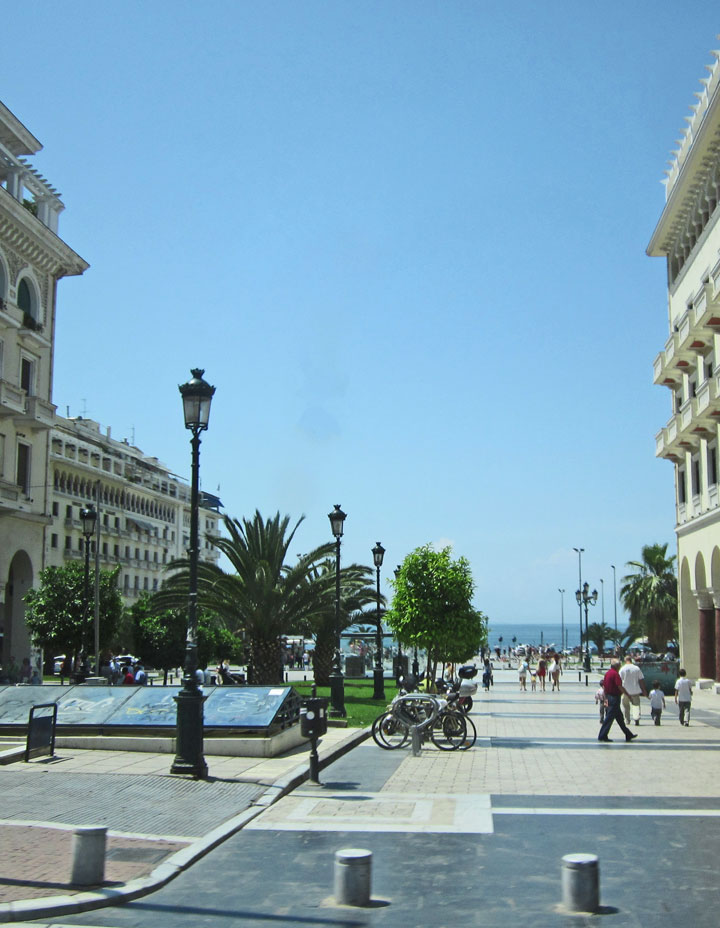
In 379 when the Roman Prefecture of Illyricum was divided between the East and
West Roman Empires, Thessaloniki became the capital of the new Prefecture of
Illyricum. With the Fall of Rome in 476, Thessaloniki became the second-largest
city of the Eastern Roman Empire. Around the time of the Roman Empire
Thessaloniki was also an important center for the spread of Christianity; the
First Epistle to the Thessalonians written by Paul the Apostle is the first
written book of the New Testament.
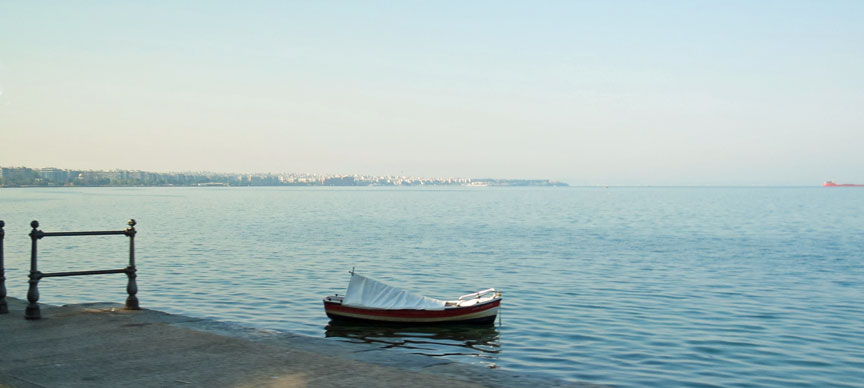
From the first years of the Byzantine Empire, Thessaloniki was considered the
second city in the Empire after Constantinople, both in terms of wealth
and size. The city held this status until it was transferred to Venice in 1423.
In the 14th century the city's population exceeded 100,000, making it larger
than London at the time.
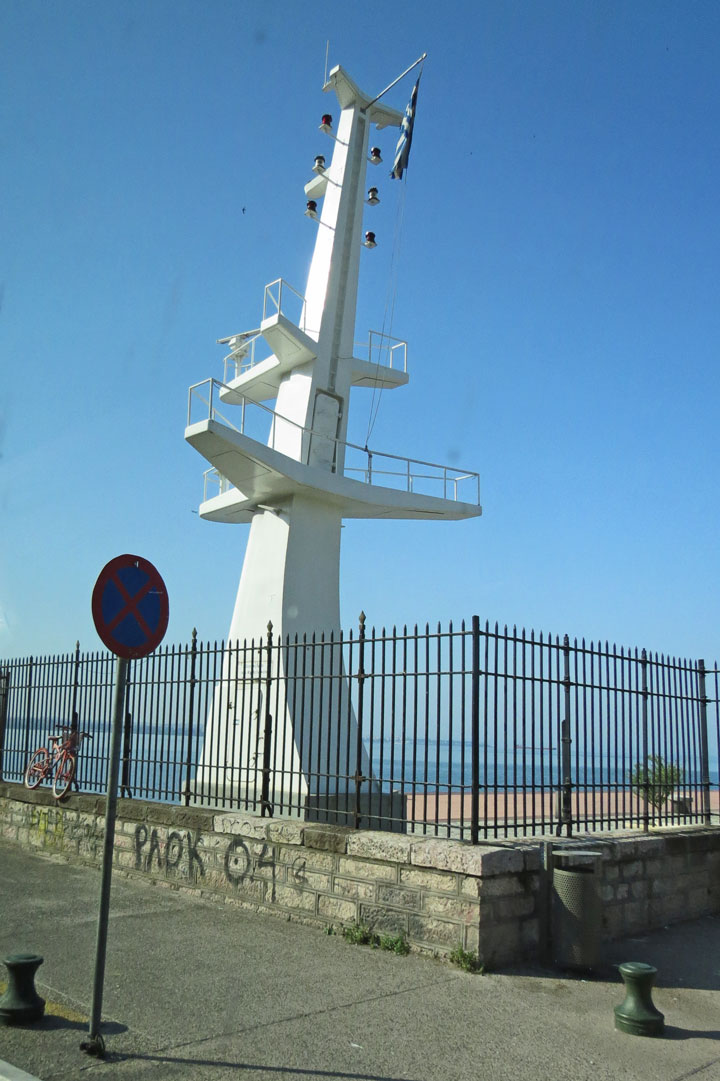
During the 6th-7th centuries the area around Thessaloniki was invaded by Avars
and Slavs, who unsuccessfully laid siege to the city several times. Traditional
historiography stipulates that many Slavs settled in the hinterland of
Thessaloniki, however, this migration was actually on a much smaller scale
than previously thought. In the 9th century, the Byzantine Greek missionaries
Cyril and Methodius, both natives of the city, created the first literary
language of the Slavs, the Old Church Slavonic, most likely based on the Slavic
dialect allegedly used in the hinterland of their hometown.

An Arab invasion in 904 resulted in a short term capture. The economic expansion
of the city continued through the 12th century as the rule of the Komnenoi
emperors expanded Byzantine control to the north. Thessaloniki passed out of
Byzantine hands in 1204, when Constantinople was captured by the forces of
the Fourth Crusade and incorporated the city and its surrounding territories in
the Kingdom of Thessalonica — which then became the largest vassal of the
Latin Empire. In 1224, the Kingdom of Thessalonica was overrun by the Despotate
of Epirus, a remnant of the former Byzantine Empire, under Theodore Komnenos
Doukas who crowned himself Emperor, and the city became the Despotat's capital.
This era of the Despotate of Epirus is also known as the Empire of Thessalonica.
Following his defeat at Klokotnitsa however in 1230, the Empire of Thessalonica
became a vassal state of the Second Bulgarian Empire until it was recovered
again in 1246, this time by the Nicaean Empire. In 1342, the city saw the rise
of the Commune of the Zealots, an anti-aristocratic party formed of sailors and
the poor, which is nowadays described as social-revolutionary. The city was
practically independent of the rest of the Empire, as it had its own government,
a form of republic. The zealot movement was overthrown in 1350 and the city was
reunited with the rest of the Empire.
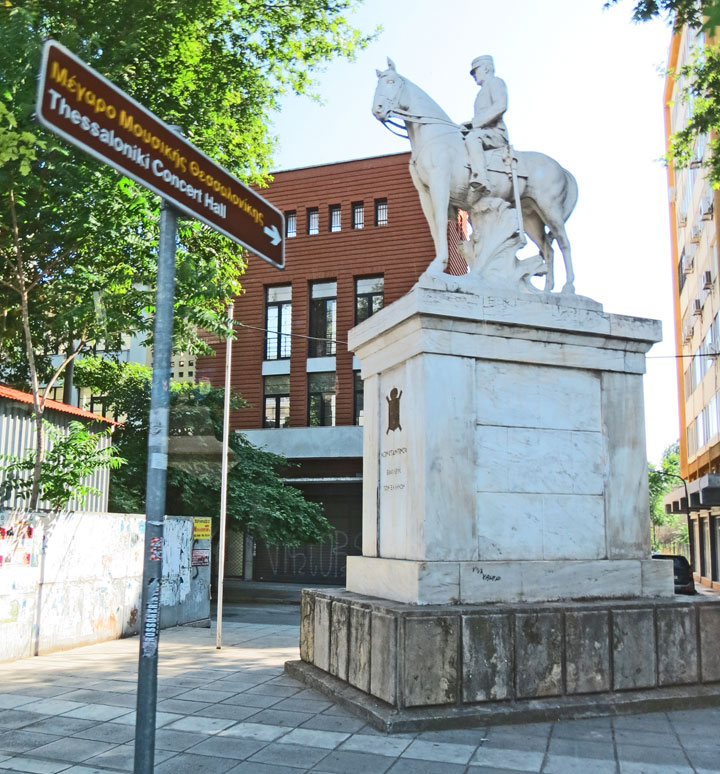
In 1423, Despot Andronicus, who was in charge of the city, ceded it to the
Republic of Venice with the hope that it could be protected from the Ottomans
who were besieging the city (there is no evidence to support the oft-repeated
story that he sold the city to them). The Venetians held Thessaloniki until it
was captured by the Ottoman Sultan Murad II on 29 March 1430.
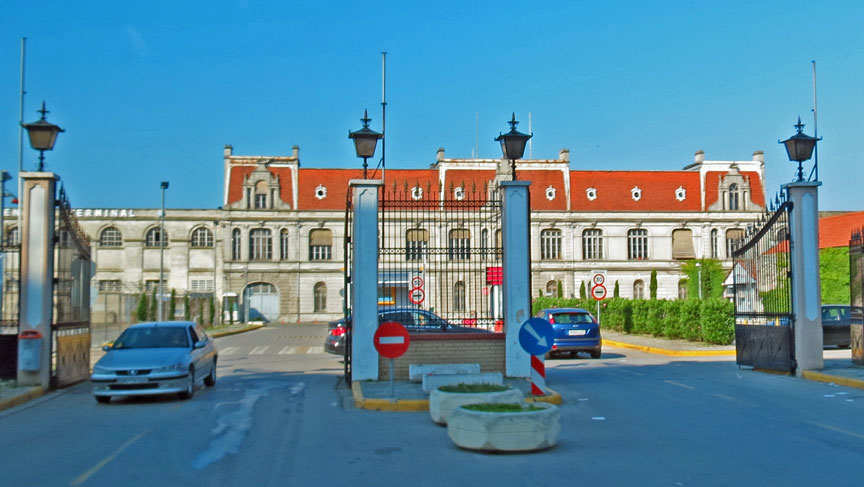
Murad II took Thessaloniki, and brutally sacked and pillaged it; roughly
one-fifth of the city's population was enslaved. Upon the capture and
plunder of Thessaloniki, many of its inhabitants escaped, including
intellectuals such as Theodorus Gaza “Thessalonicensis” and Andronicus
Callistus. However, the change of sovereignty from the Byzantine Empire to the
Ottoman one did not affect the city's prestige as a major imperial city and
trading hub. Thessaloniki and Smyrna, although smaller in size than
Constantinople, were the Ottoman Empire's most important trading hubs.
Thessaloniki's importance was mostly in the field of shipping, but also in
manufacturing, while most of the city's trade was controlled by ethnic Greeks.
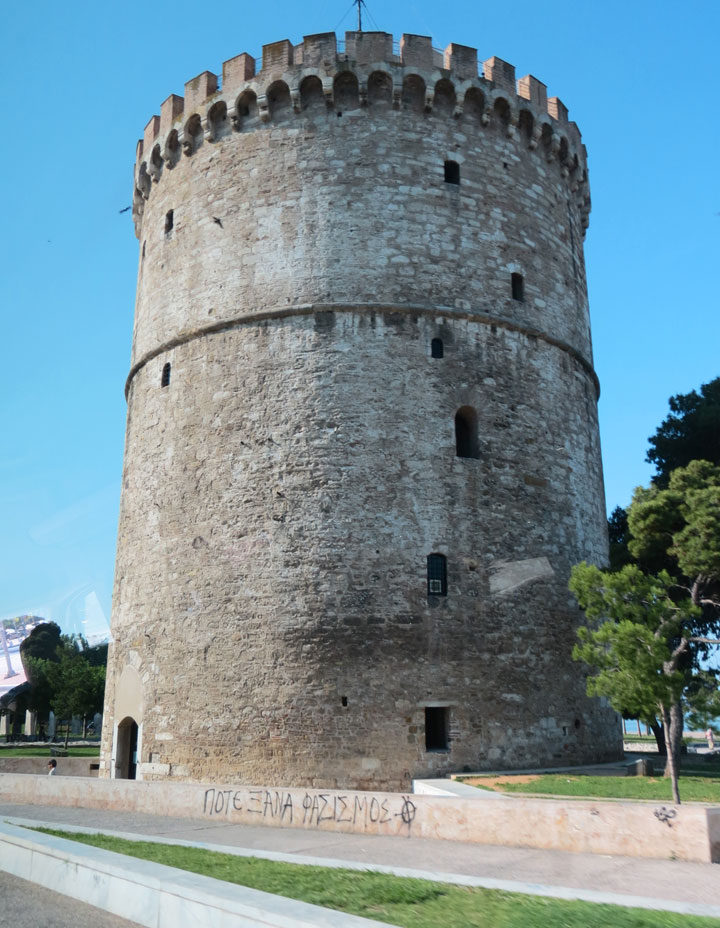
During the Ottoman period, the city's Muslim and Jewish population grew. By 1478
Selânik (سلانیك), as the city came to be known in Ottoman Turkish, had a
population of 4,320 Muslims, 6,094 Greek Orthodox and some Catholics, but no
Jews. Soon after the turn of the 15th to 16th century, nearly 20,000 Sephardic
Jews had immigrated to Greece from Spain following their expulsion. By ca. 1500,
the numbers had grown to 7,986 Greeks, 8,575 Muslims, and 3,770 Jews. By 1519,
Sephardic Jews numbered 15,715, 54% of the city's population. Some historians
consider the Ottoman regime's invitation to the Jews was a strategy to prevent
the ethnic Greek population (Eastern Orthodox Christians) from dominating the
city.
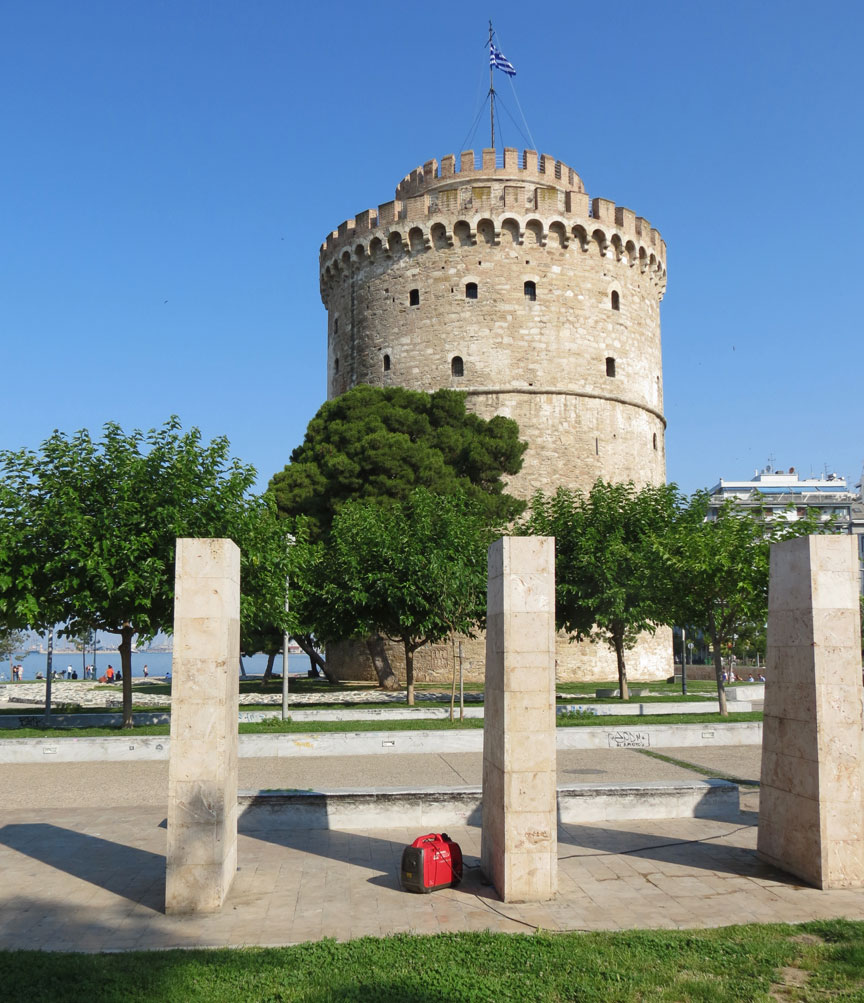
Thessaloniki was the capital of the Selanik sanjak within the Rumeli Eyalet
(Balkans) until 1826, and subsequently the capital of Selanik Vilayet
(between 1826 and 1864 Selanik Eyaleti). This consisted of the sanjaks of
Selanik, Serres and Drama between 1826 and 1912. Thessaloniki was also a
Janissary stronghold where novice Janissaries were trained. In June 1826,
regular Ottoman soldiers attacked and destroyed the Janissary base in
Thessaloniki while also killing over 10,000 Janissary, an event known as The
Auspicious Incident in Ottoman history. From 1870, driven by economic growth,
the city's population expanded by 70%, reaching 135,000 in 1917.
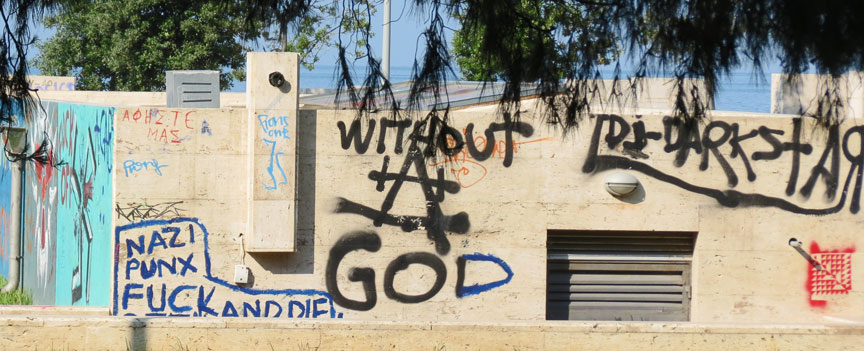
In the early 20th century, Thessaloniki was in the center of radical activities
by various groups; the Greek Macedonian Committee, founded in 1903, and the
Bulgarian-Macedonian Internal Macedonian Revolutionary Organization, founded in
1893. In 1903 an anarchist group known as the Boatmen of Thessaloniki planted
bombs in several buildings in Thessaloniki, including the Ottoman Bank, with
some assistance from the IMRO. The Greek consulate in Ottoman Thessaloniki (now
the Museum of the Macedonian Struggle) served as the center of operations for
the Greek guerillas. In 1908 the Young Turks movement broke out in the city,
sparking the Young Turk.
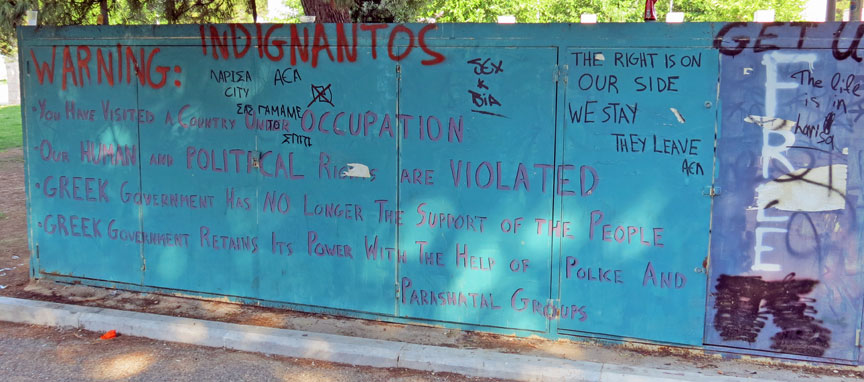
As the First Balkan War broke out, Greece declared war on the Ottoman Empire and
expanded its borders. When Eleftherios Venizelos, Prime Minister at the time,
was asked if the Greek army should move towards Thessaloniki or Monastir (now
Bitola, Republic of Macedonia), Venizelos replied "Salonique ŕ tout prix!"
(Thessaloniki, at all costs!). As both Greece and Bulgaria wanted Thessaloniki,
the Ottoman garrison of the city entered negotiations with both armies. On 8
November 1912 (26 October Old Style), the feast day of the city's patron saint,
Saint Demetrius, the Greek Army accepted the surrender of the Ottoman garrison
at Thessaloniki. The Bulgarian army arrived one day after the surrender of the
city to Greece and Tahsin Pasha, ruler of the city, told the Bulgarian officials
that "I have only one Thessaloniki, which I have surrendered". After the Second
Balkan War, Thessaloniki and the rest of the Greek portion of Macedonia were
officially annexed to Greece by the Treaty of Bucharest in 1913. On 18 March
1913 George I of Greece was assassinated in the city.
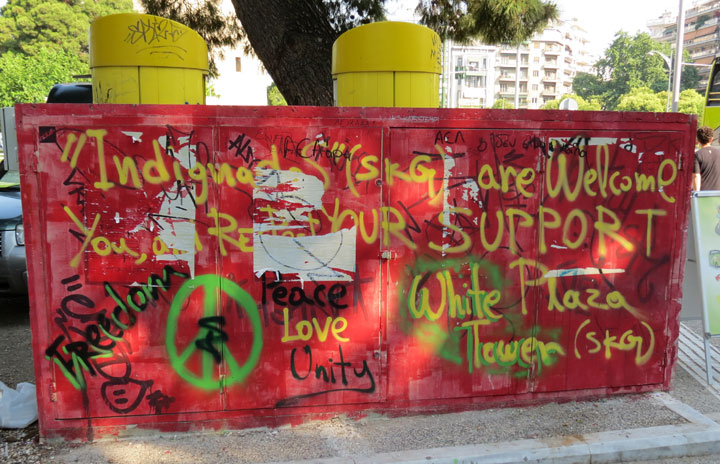
In 1915, during World War I, a large Allied expeditionary force established a
base at Thessaloniki for operations against pro-German Bulgaria. This culminated
in the establishment of the Macedonian Front, also known as the Salonika Front.
In 1916, pro-Venizelist Greek army officers and civilians, with the support of
the Allies, launched the Movement of National Defense, creating a pro-Allied
temporary government by the name of the "State of Thessaloniki" that controlled
"new lands" (lands that were gained by Greece in the Balkan Wars, most of
Northern Greece including Greek Macedonia, the North Aegean as well as the
island of Crete); the official government of the King in Athens, the "State of
Athens", controlled the "old lands" which were traditionally monarchist. The
State of Thessaloniki was disestablished with the unification of the two
opposing Greek governments under Venizelos, following the abdication of King
Constantine in 1917.
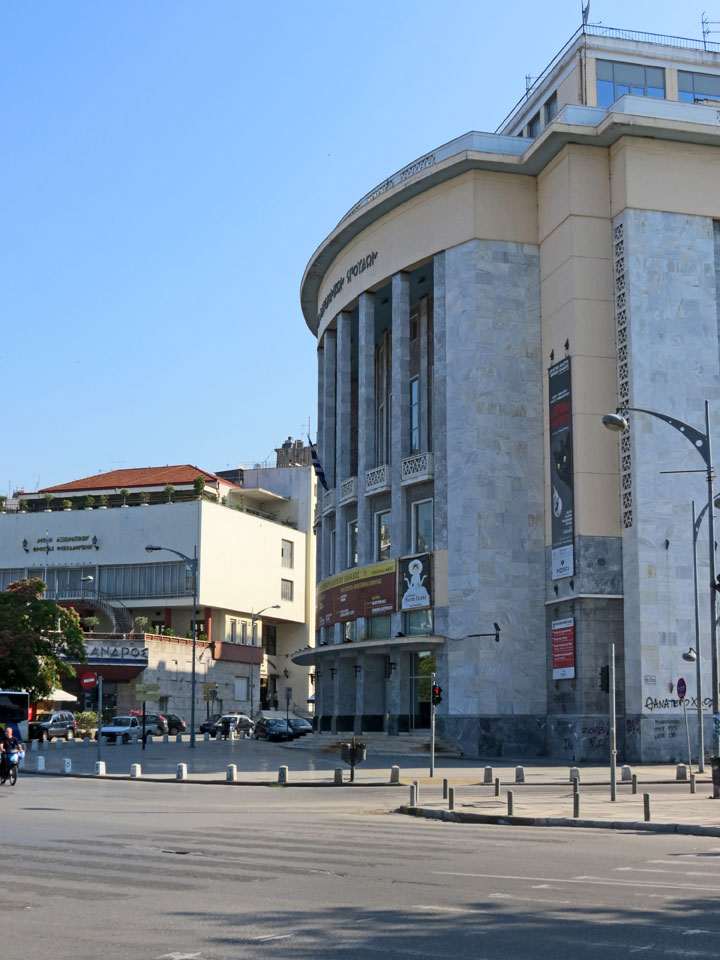
Most of the old center of the city was destroyed by the Great Thessaloniki Fire
of 1917, which started accidentally by an unattended kitchen fire on 18 August
1917. The fire swept through the centre of the city, leaving 72,000 people
homeless; according to the Pallis Report, most of them were Jewish (50,000).
Many businesses were destroyed, as a result, 70% of the population were
unemployed. Also a number of religious structures of the three major faiths were
lost. Nearly one-quarter of the total population of approximately 271,157 became
homeless. Following the fire the government prohibited quick rebuilding, so it
could implement the new redesign of the city according to the European-style
urban plan prepared by a group of architects, including the Briton Thomas Mawson,
and headed by French architect Ernest Hébrard. The Jewish community's properties
were reduced from a value of 6.5 million Greek drachmas to 750,000. Because of
their losses and unable to wait for the rebuilding of the new plan, nearly half
of the Jewish Greek population emigrated to France, the United States and
Palestine.
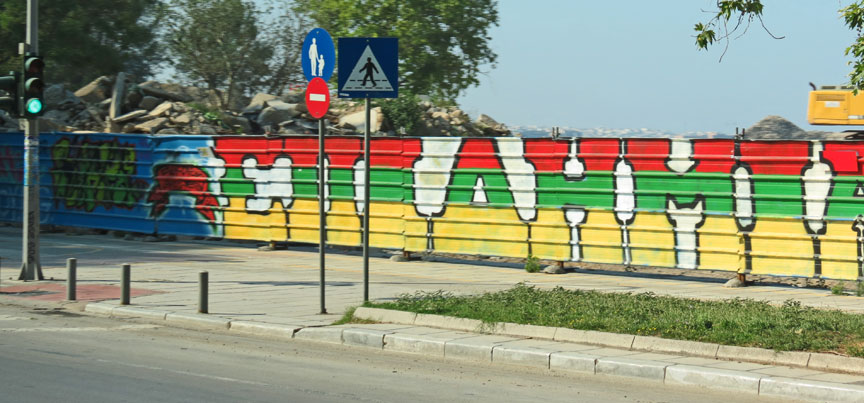
After the defeat of Greece in the Greco-Turkish War and during the break-up of
the Ottoman Empire, a population exchange took place between Greece and Turkey.
Over 160,000 ethnic Greeks deported from the former Ottoman Empire were
resettled in the city, changing its demographics. Additionally many of the
city's Muslims were deported to Turkey, ranging at about 20,000 people.

Alexander the Great
During World War II Thessaloniki was heavily bombarded by Fascist Italy (with 232 people dead, 871 wounded and over 800 buildings damaged or destroyed in November 1940 alone), and, the Italians having failed to succeed in their invasion of Greece, it fell to the forces of Nazi Germany on 8 April 1941 and remained under German occupation until 30 October 1944 when it was liberated by the Greek People's Liberation Army. The Nazis soon forced the Jews into a ghetto near the railroads and on 15 March 1943 began the deportation process of the city's 56,000 Jews to its concentration camps. They deported over 43,000 of the city's Jews in concentration camps, where most were killed in the gas chambers. The Germans also deported 11,000 Jews to forced labor camps, where most perished. Only 1,200 Jews live in the city today. The city suffered considerable damage from Allied bombing as they began to move against the Germans.
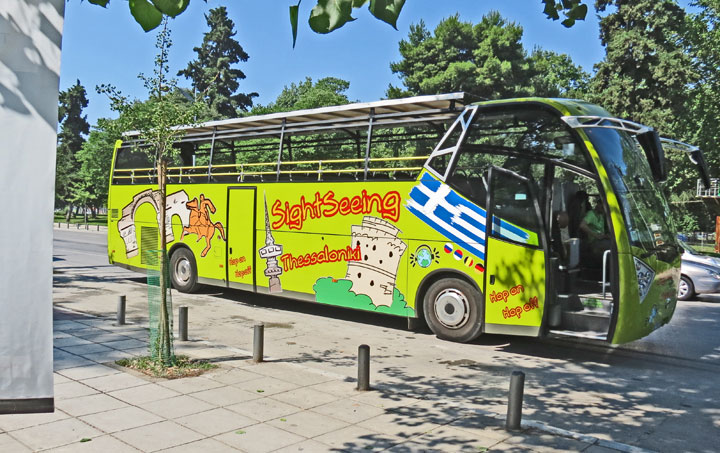
The importance of Thessaloniki to Nazi Germany can be demonstrated by the fact
that, initially, Hitler had planned to incorporate it directly in the Third
Reich (that is, make it a part of Germany) and not have it controlled by a
puppet state such as the Hellenic State or an ally of Germany (Thessaloniki had
been promised to Yugoslavia as a reward for joining the Axis on 25 March 1941).
Having been the first major city in Greece to fall to the occupying forces just
two days after the German invasion, it was in Thessaloniki that the first Greek
resistance group was formed (under the name «Ελευθερία», Eleftheria, "Freedom")
as well as the first anti-Nazi newspaper in an occupied territory anywhere in
Europe,[83] also by the name Eleftheria. Thessaloniki was also home to a
military camp-converted-concentration camp, known in German as "Konzentrationslager
Pavlo Mela" (Pavlos Melas Concentration Camp), where members of the resistance
and other non-favorable people towards the German occupation from all over
Greece were held either to be killed or sent to concentration camps elsewhere in
Europe.
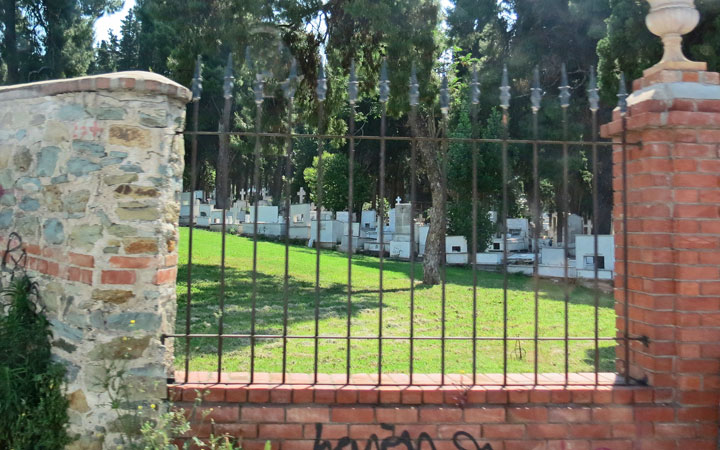
After the war, Thessaloniki was rebuilt with large-scale development of new
infrastructure and industry throughout the 1950s, 1960s and 1970s. Many of its
architectural treasures still remain, adding value to the city a tourist
destination, while several early Christian and Byzantine monuments of
Thessaloniki were added to the UNESCO World Heritage list in 1988. In 1997,
Thessaloniki was celebrated as the European Capital of Culture, sponsoring
events across the city and the region. Agency established to oversee the
cultural activities of that year 1997 was still in existence by 2010. In 2004
the city hosted a number of the football events as part of the 2004 Summer
Olympics.

Today Thessaloniki has become one of the most important trade and business hubs
in Southeastern Europe, with its port, the Port of Thessaloniki being one of the
largest in the Aegean and facilitating trade throughout the Balkan hinterland.
The city also forms one of the largest student centers in Southeastern Europe,
is host to the largest student population in Greece and will be the European
Youth Capital in 2014, after it celebrates 100 years of union with Greece in
2012
Text from Wikipedia

